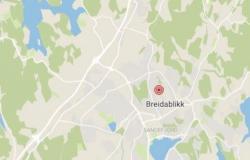Background
Nexans Halden is an existing business based in Halden municipality. The business has an older permit (permit no. 2006.0292.T) which was last changed on 19.12.2007, in addition to the fact that they will now increase their production. In that connection, they need a new permit with updated conditions in accordance with current practice for such permits.
Summary of the application
Nexans Halden applies for increased production of cables; PEX cables (cross-linked polyethylene insulated power cable) and MI cable (mass impregnated power cable). A framework requirement of 70,000 tonnes, equivalent to 1,750 km, of produced cable per year is being applied for. This is slightly more than doubling compared to today’s production, which is stated to be 28,000 tonnes, which corresponds to 1,050 km a year. PEX cables will make up the majority of production. Nexans Halden has already built an additional tower to increase production capacity and plans to increase production in 2024.
Nexans Halden’s facility in Halden municipality at Knivsøveien 70, Gnr. 4, no. 162, 163 and 164 are regulated for the purpose through an updated detailed regulation plan plan-ID 3001 G-733 of 09.12.2021. The area is set aside for commercial activities (the factory area and parking), traffic and a marina in the area section of the municipal plan for Halden 2023-2050, adopted on 16 February 2023.
The business operates 24/7 throughout the year.
Release to water
The applicant states that even if production doubles, emissions to water will not increase. Production of cables mainly takes place in closed processes, where process water and inputs are recycled and reused in production.
Discharge to municipal drains
Process water, consisting of condensation water from drying paper insulation, is fed to the municipal sewage network. The process water is cleaned in oil separators before discharge. The requested discharge of process water is shown in the table below. Requested quantities of water and quantities of components correspond to previous years’ discharges which are fed into the municipal sewage network. This means that increased production must not lead to an increase in emissions to water that is fed to the municipal sewage network. Nexans Halden has only applied for emissions of heavy metals and oil. The state administrator has added the rows for phosphorus, KOF and BOF5 based on information in the application.
| Parameter | Maximum emission concentration | Quantity per year |
| Arsenic | 1.0 µg/l | 0.05 kg |
| Lead | 50 µg/l | 0.5 kg |
| Cadmium | 2 µg/l | 0.003 kg |
| Cups | 200 µg/l | 3 kg |
| Chrome | 50 µg/l | 0.05 kg |
| Mercury | 2 µg/l | – |
| Nickel | 50 µg/l | 0.4 kg |
| Zinc | 500 µg/l | 10 kg |
| THC (oil) | 50 mg/l | 150 kg |
| Microplastics | – | 10 kg |
| Phosphorus (Tot-P) | 6.4 mg/l | 350 kg |
| COF | 290 mg/l | 16,000 kg |
| BOF5 | 80 mg/l | 4,400 kg* |
| Amount of water | 55,000 m3 |
*calculated by the state administrator based on the requested concentration and amount of water.
Halden municipality is in the process of granting a discharge permit to Nexans Halden for supplies of process water to the municipal sewage network and the Halden sewage treatment plant.
Discharge to the fjord
Microplastics
Nexans Halden is applying to release 10 kg of microplastic per year into Ringdalsfjorden, which is part of Iddefjorden. Ringdalsfjorden and Iddefjorden are a side fjord to Oslofjorden. The discharges come from roof water and surface water from the business area. Water from roofs and surfaces is led to infiltration basins which have a total of six discharge points to the fjord. This water contains some microplastics that come from handling the cables.
Cooling water
Nexans Halden applies for discharge of cooling water from the impregnation plant into the fjord. The cooling water is uncontaminated drinking water. The amount of cooling water will be 70-80,000 m3 per year. The temperature will vary with the season, but will always be below 20 ºC. pH will be 5.5-7.0. The cooling water is released directly into the surface layer of the fjord.
Emissions to air
The production results in emissions to the air. There are two significant sources of emissions to air; when washing the impregnation boilers from the production of MI cables and when degassing PEX cable. Nexans Halden applies for a total emission of up to 20 tonnes of volatile organic compounds (VOC) annually.
This includes emissions of 2 tonnes of VOC per year for washing impregnation boilers, and 18 tonnes of VOC per year for degassing PEX cables. The emission points to air are distributed over three main areas at the company. Most emission points are on the roof, but some are on the wall.
The applicant proposes to take samples for air emissions annually at the discharges from cleaning impregnation boilers and at the degassing vessels for PEX cables. The applicant wants the measurement program for emissions to air to be revised after three years, based on the calculated emission quantities.
Noise
The application contains a noise assessment, with a noise zone map, dated 18 August 2021. The investigation has been carried out in connection with Nexans’ expansion of facilities for cable production in Halden.
The noise investigation shows that the increased activity means that noise at night can be exceeded at two homes, Knivsøyveien 54 and 56. Nexans Halden must offer these noise shielding. The most important cause of noise is internal transport in the factory area, forklifts with reversing warning, lorries and the like. Other relevant measures that have been described are to dampen reversing warnings on forklifts and shielding when blowing out nitrogen gas at cable towers.
With increased cable production, the need for ship transport and loading will also increase. There is a need for larger ships with greater cargo capacity to come to the facility. The applicant states that noise from the port will not exceed the limit values in the current permit. Noise applies in particular to the loading of cables on ships that cannot be connected to shore power. Nexans Halden shall, to the greatest extent possible, use ships that are connected to shore power. For ships that cannot use shore power, auxiliary engines must be in operation to supply the ship with power. Such auxiliary motors can be noisy. Loading is a time-consuming process that can take several weeks and takes place around the clock.
Nexans Halden has had noise measurements carried out during cable loading on ships that do not have shore power. The measurements indicate that the general noise requirement of a maximum of 55 dB(A) is complied with, but that the stricter “summer requirement” of 45 dB(A) can be exceeded at night by two neighbours: Svinesundveien 190 and the nearest holiday home on the Swedish side of the fjord. The applicant states that Svinesundveien can be shielded against noise from loading, but this is not possible for the holiday home.
Nexans Halden states that they will discontinue the production of “umbilical” cable that is used offshore, as this often means that there are ships without the possibility of connecting to shore power that are used when loading this type of cable. Furthermore, the applicant describes that the business will switch to the exclusive production of submarine power transmission cables, which means that most of the loading is carried out by Nexan’s own vessels, which use shore power. The business must include noise requirements in the customer contracts for the collection of cable at Nexans Halden’s port.
In accordance with § 36-8 of the pollution regulations, the application from Nexans Halden is put out for public review. The application can be read in the menu on the right.
You can send input or comments to the application
Any statement on the application must be sent to the State Administrator by 24/05/2024. We ask that comments on the application be given in writing by e-mail to [email protected], or by post to the Statsforvalteren in Oslo and Viken, PO Box 325, 1502 Moss. Mark the statement with reference «consultation opinion in case 2021/16916».
Information on further proceedings
After any consultation statements have been received by the State Administrator in Oslo and Viken, they will be presented to the applicant for a statement, before the State Administrator makes a decision on the matter.
Tags: Hearing application permit Pollution Act Nexans Norway Halden department
-





